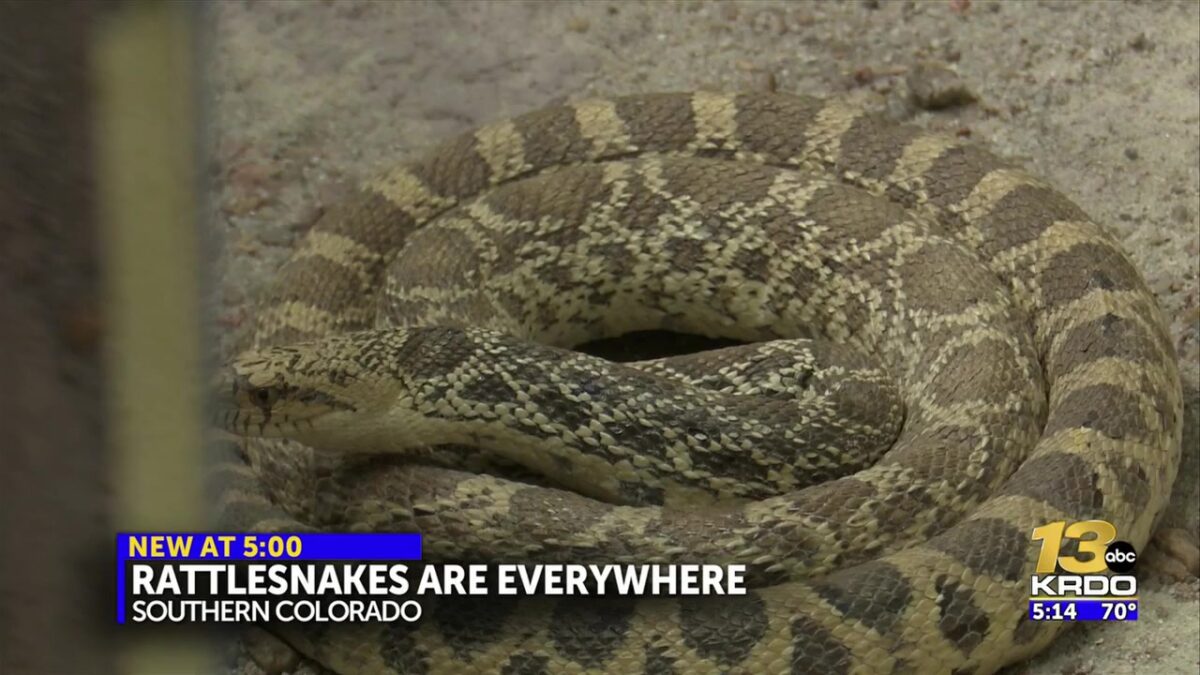Colorado wildlife officials warn rattlesnake season is upon us

Julia Donovan
COLORADO SPRINGS, Colo. (KRDO) – With the warmer weather sticking around, rattlesnakes are coming out of their dens and possibly into your personal space. We spoke with wildlife officials on how you can avoid a bite like some of the gnarly ones Coloradans have seen over the last few years.
Wildlife officials say people can’t merely stay away from areas rattlesnakes frequent to ensure their safety, since they can be found almost anywhere around here.
“Prairie rattlesnakes are well-distributed across most areas of Colorado,” said Colorado Parks and Wildlife spokesperson John Livingston. “Can live anywhere up to elevation lines as high as 9,500 feet, but more commonly found 7,500 feet and below.”
Colorado Springs falls within those elevation parameters.
Carissa Welch, and her dog Rizzo, who got bit trying to protect her, will tell you that. Welch will also tell you the vet bill was expensive, but worth it.
“There’s no amount of money I wouldn’t pay to save his life again,” she told KRDO while Rizzo was undergoing treatment.
Rattlesnakes are thriving in Pueblo, too.
“It’s a fairly large bite area,” said Luis Linhares who was attacked by a rattlesnake in 2023. “So, the large vipers are around here.”
“I’m surprised he pulled through this,” Luis’s wife, Linn Smith, said in a KRDO interview days after the attack.
So, how do we keep ourselves and our pets safe?
According to Livingston, rattlesnake season is usually from April to September, and the reptiles like to hangout on trails in the morning to warm up.
He says don’t try to go around them.
“You just want to slowly back away off that trail,” Livingston elaborated.
Keep your dogs on a leash, don’t hike with earbuds (that way you can hear the warning rattle), and wear long, thick pants and closed toed shoes in grassy areas… even in the heat.
Above all – you should call 911 immediately if you get bitten since the venom spreads fast.
“A cytotoxin that they have starts breaking down your muscles and your fat when they bite you,” Livingston explained. “When they bite pray, and feed on pray, it helps them digest and breakdown that animal.”
Livingston says while rattlesnake bites aren’t usually fatal, they can be deadly depending on your size, the size of the bite and how quickly you’re treated.